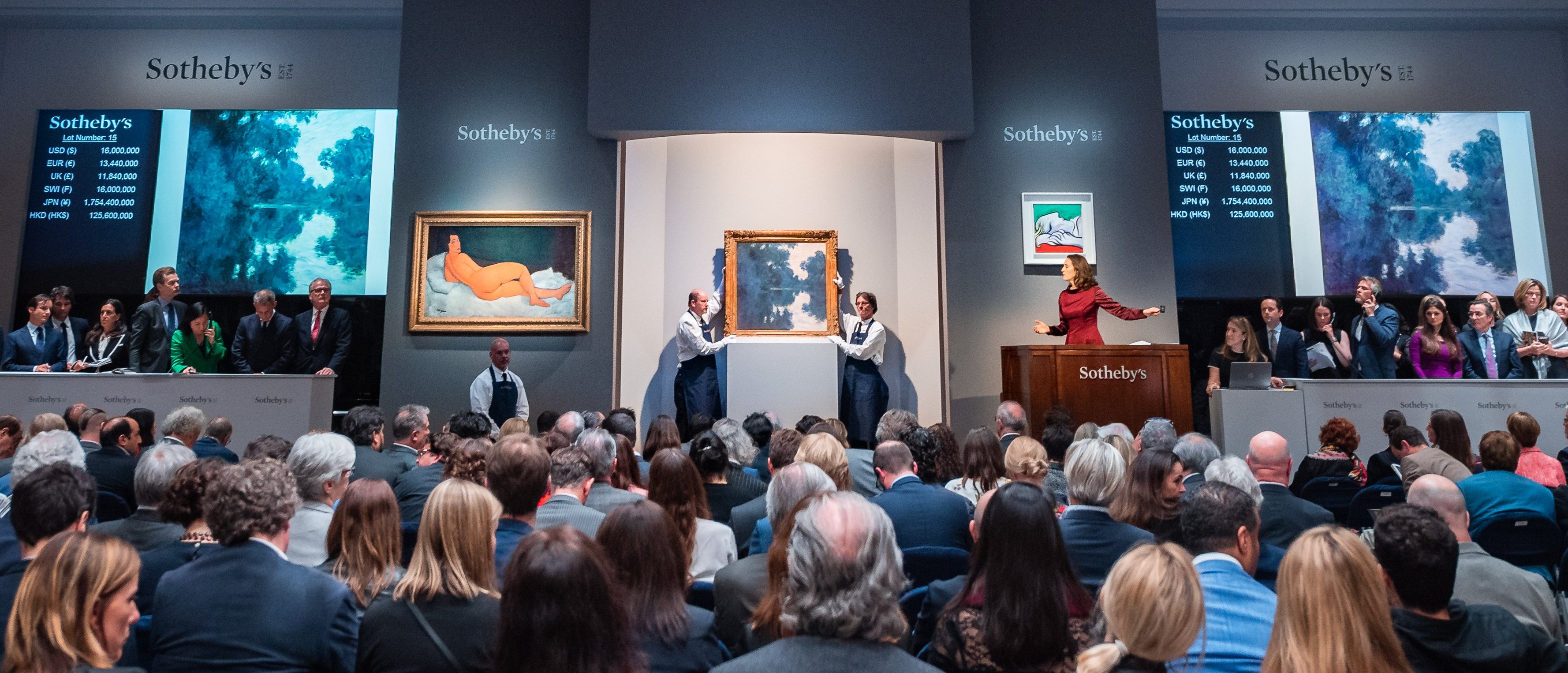
Buoyed by record results in private sales and in its Hong Kong salesroom, Sotheby’s received a warm reception from Wall Street this morning after reporting its results for the fourth quarter and full year of 2018. The house’s consolidated sales—a blend of aggregate auction sales, private sales, and sales from inventory—notched $6.4 billion for the year, a 16 percent increase over 2017. Annual private sales reached $1.02 billion, the highest total in the past five years and up 37 percent year on year.
“My colleagues and I begin 2019 with a great sense of excitement about our company’s future,” said CEO Tad Smith on this morning’s earnings call. “Although we are the oldest company listed on the New York Stock Exchange, we are looking very fresh for our 275th birthday.”
Sotheby’s net income of $108.6 million, or $2.09 per share, dipped from 2017, when the figures came in at $118.8 million and $2.20 per share, respectively.
However, the house’s results in the fourth quarter of 2018 showed marked improvements from the equivalent period in 2017. (Fourth quarter results are especially notable for their inclusion of the house’s major November evening auctions in New York.) Net income rose about 12 percent to $85.7 million, versus $76.7 million in the fourth quarter of 2017. Per-share earnings leaped 20 percent to $1.72, versus $1.43 per share in the fourth quarter of 2017.
Sotheby’s staff take phone bids during an auction at Sotheby’s in Hong Kong on April 3, 2018.
Photo credit: Isaac Lawrence/AFP/Getty Images.
Beyond the Numbers
Another contributing factor to Sotheby’s strong fourth quarter results came from the east. Most of its marquee autumn sales week in Hong Kong took place in the opening days of October. Those auctions played a role in rocketing the house to nearly $1 billion in aggregate sales in Hong Kong in 2018, a new high during Sotheby’s 45 years in Asia.
In an interview with artnet News, Patti Wong, senior director and chairman of Sotheby’s Asia, said that the house’s robust business with Asian clients grows out of a two-pronged strategy in the region: to cultivate new buyers, and to convert existing collectors of one category into collectors of multiple categories.
This approach has paid off for the house beyond its Hong Kong salesroom, as Asian buyers acquired six of the house’s 20 priciest lots worldwide last year—a statistic consistent with the “top-down” trend that she says distinguishes new Asian clients from their western counterparts, who usually prefer to move up from lower price bands rather than entering at the top of the market and diversifying their spending downward.
Other data points give Sotheby’s confidence its success in Asia will continue. According to Wong, 23 percent its buyers based in Asia are under the age of 40, and over 25 percent of bidders with relationships to Sotheby’s Asia were new to the house last year. She also emphasizes Sotheby’s focus on a “pan-Asian” strategy rather than a China-centric one that would be more susceptible to macroeconomic friction caused by US-China relations as well as cracks in the Chinese economy.
Online sales were another bright spot for Sotheby’s in 2018. The house delivered $220.4 million in online sales for the year, a 24 percent increase over 2017. (Sotheby’s defines “online sales” as a combination of winning bids executed online in live auctions, digital-only sales, and acquisitions made on its dedicated e-commerce websites for home goods and wine.) The house also reported $72.1 million in online-only sales for the year—four times its equivalent total in 2017. Online bidders also accounted for 37 percent of all lots sold at Sotheby’s in 2018.
A sketch for the expanded Sotheby’s New York headquarters. Photo: Spencer Platt/Newsmakers.
Looking Ahead
While acknowledging the new year’s outset contains “a bit more uncertainty” in the economy than last year, Smith set bullish expectations for Sotheby’s going forward. His rosy outlook owes in no small part to progress on consignments secured for upcoming sales. “There is a great deal of property in the marketplace that we have already won, and still much being competed for right now, especially for New York in May,” he said. Some of those consignments will go on view in Sotheby’s newly renovated Upper East Side headquarters, which precedes physical upgrades to Sotheby’s spaces on New Bond Street in London (due in October) and in Paris (due in December).
Smith also provided insight about key auction-market trends from the last few years that are poised to endure. “Looking ahead to 2019, we continue to see a market dominated by estate sales that can carry lower margins,” he noted, “but we also anticipate fewer of the very high value paintings that impacted 2018.” In other words, the auction house may be planning fewer aggressive guarantees designed to secure top-flight property, which bruised its profit margins in the second quarter of last year. Near the close of the earnings call, he also highlighted the middle market as an area that Sotheby’s “continues to develop very aggressively” worldwide.
Although it is not a one-to-one comparison since Christie’s is a privately held company with no obligation to reveal the same level of fiscal detail, Sotheby’s chief rival reported total sales of $7 billion for 2018––about $600 million higher than Sotheby’s. However, Sotheby’s won the annual battle on the private-sales front, beating Christie’s $653 million by about 56 percent.
Sotheby’s ($BID) opened the day trading at $40.35 per share on the New York Stock Exchange. Immediately after the earnings call’s end, the share price ticked up to $41.89. By publication time, it had surged to $44.08.
Sotheby’s share performance in the past five days, including trading after this morning’s earnings report. Courtesy of Yahoo Finance.